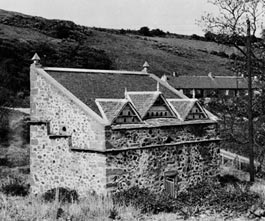| KNOWLEDGE AND BELIEF |
|
|
|
 |
Doocot, Kilspindie, Perthshire |
Most doocots in Scotland were built between the 16th and 18th centuries and are of two types: lectern – like this one, and beehive – round-shaped like old types of beehive.
Only landowners could build them so they became status symbols. The birds were a source of fresh meat, especially in winter, and their droppings made good fertiliser.
The birds came and went through flight holes in the triangular roof dormers. The zig-zag line of projecting stonework is a 'rat course', designed to discourage rats from scaling and entering the building. |

Resource pack
|
 |
|
|





